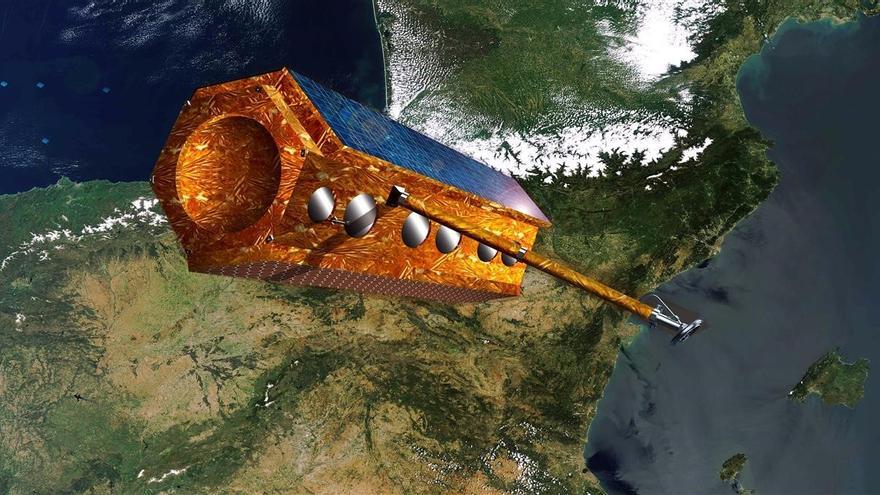In July 2002, the invasion of the Tiny Spanish islet of Perejil unleashed a diplomatic crisis that, against all odds, ended up moving into space. It was the morning of July 11 when Morocco announced what was there ‘occupied’ the Spanish crag —A territory barely 500 meters long, totally uninhabited and located in the Strait of Gibraltar. The news caught the Spanish authorities by surprise. The Ministry of Defense, somewhat incredulous with what happened, detected that just at those moments the French satellite Helios was flying over the area and requested live images of the place to understand what was happening. But France, to avoid getting involved in a diplomatic conflict with Morocco, ended up denying the request. It was then that Spain opened its own spy satellite program.
In the last decade, more and more countries, in the same way that has happened with Spain, have embarked on terrestrial observation programs with which to monitor ‘in real time’ what happens in any corner of the globe. At this time there is at least a dozen countries who have openly acknowledged the launch of spy satellites. These are the United States, Russia, China, the United Kingdom, India, North Korea, Japan, Israel, France, Germany, Italy and Spain. Beyond these, there are also at least a dozen more countries that have launched earth observation satellites with military applications through private companies and many others that have done so completely confidentially, for example, in the case of Morocco.
No there are official figures on how many military satellites are currently orbiting the globe but, according to some estimates, they could be centenarians. Although, of course, due to the confidential nature of these types of programs, the figure could be much higher.
Uses of military satellites
But what are they and what exactly are these satellites for? Is about high appliances Precision that orbit between 160 and 200 kilometers from the earth’s surface. Their tour allows them collect high resolution images on a daily basis, weather data, and natural resource maps for virtually anywhere on the planet. The cameras on board these satellites are so powerful that they can capture the detail of a car’s license plate from high in space. The vast majority of this data is used with civil fines to, for example, study the impact of the climate crisis on the planet, help manage natural disasters or improve urban planning. but there is another portion of information used with military citations for, for example, the surveillance of some territories and border control.
One of the clearest (and most recent) examples of the application of these technologies in military contexts is the case of the war in Ukraine. Throughout this conflict, satellite imagery has provided information on troop movements on the ground and about the state of the invaded cities. As Mariel Borowitz, an expert in international affairs at the Georgia Institute of Technology, explains in an article in ‘The Conversation’, the international satellite network (both public and private) came to provide «minute by minute» information on what happened on the ground. «Satellites have also provided key images to inform public opinion about the war,» adds the expert.
A multi-billion dollar industry
After the Perejil islet incident, Spain is considered deploy a modest fleet of satellites spy. The first, named Paz, was launched in February 2018. The second, Ingenuity, took off in 2020 but, «due to human error», only appeared in orbit for a few minutes. The Ministry of Defense estimates that, so far, the military probe program has provided about 114,000 images to «cover needs related to military intelligence». At this time, according to the satellite operator Hisdesat, the Spanish instruments provide about thirty daily photographs to the army. In the last year, with the creation of the Spanish Space Agency, the government has further assured its investment in this type of space projects and, in the future, the launch of more observation satellites is not ruled out.
Related news
Right now it is estimated that there are between 2,500 and 3,000 active satellites orbiting the planet. Of all these, at least a fifth of the military could have applications of some kind. According to a recent analysis carried out by the ‘International Forecast’ platform, a ‘think thanks’ specializing in military services, the military-financed satellite industry will grow exponentially in the next decade. By 2030, it is estimated that investment in this sector will amount to almost 54,000 million dollars and will eventually deploy some 850 more probes into space.
By 2030 it is estimated that there will be about 850 more military satellites in space
Everything indicates that some of these spy satellites will be launched in ‘broad daylight’, like many of their predecessors, and many others will do so in absolute discretion. Of course, the ‘boom’ of spy satellites is also being accompanied by a ‘boom’ of citizen science initiatives to monitor its range and travel. «More and more fans are dedicated to following the most secret Moons on Earth,» explains Trevor Paglen in an informative tone in ‘Blank spots on the map’. «With the right equipment and knowledge, anyone can control the clandestine moons that surround our planet», explains Geoff Manaugh in an analysis published in ‘The Atlantic’.

